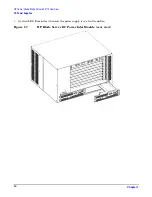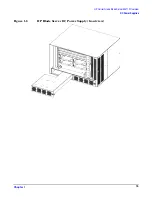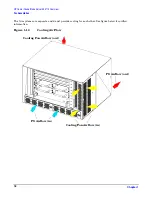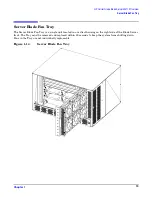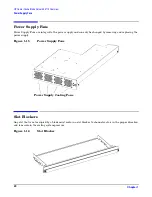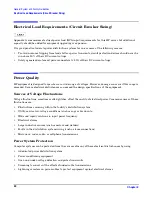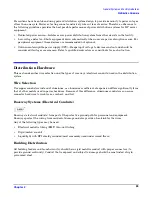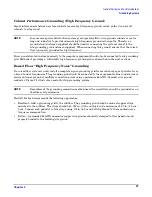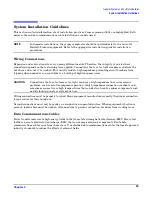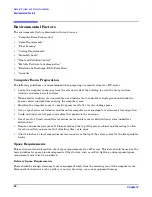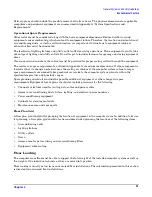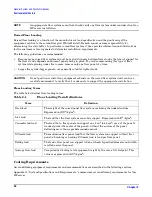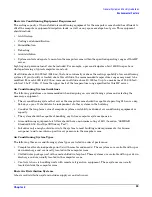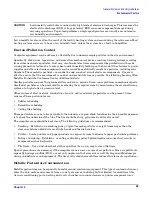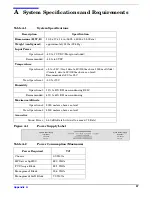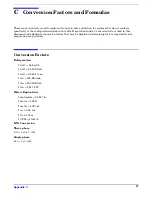
Chapter 2
General System and Facility Guidelines
Grounding Systems
27
Cabinet Performance Grounding (High Frequency Ground)
Signal interconnects between system cabinets require high frequency ground return paths. Connect all
cabinets to site ground.
NOTE
In some cases power distribution system green (green/yellow) wire ground conductors are too
long and inductive to provide adequate high frequency ground return paths. Therefore, a
ground strap (customer-supplied) should be used for connecting the system cabinet to the
site-grounding grid (customer-supplied). When connecting this ground, ensure that the raised
floor is properly grounded for high frequency.
Power panels located in close proximity to the computer equipment should also be connected to site grounding
grid. Methods of providing a sufficiently high frequency ground grid are described in the next sections.
Raised Floor “High Frequency Noise” Grounding
If a raised floor system is used, install a complete signal-grounding grid for maintaining equal potential over
a broad band of frequencies. The grounding grid should be connected to the equipment cabinet and electrical
service entrance ground at multiple connection points using a minimum #6 AWG (16mm2) wire ground
conductor. Figure 2-1 illustrates a metallic strip grounding system.
NOTE
Regardless of the grounding connection method used, the raised floor should be grounded as an
absolute safety minimum.
Hewlett-Packard recommends the following approaches:
•
Excellent—Add a grounding grid to the subfloor. The grounding grid should be made of copper strips
mounted to the subfloor. The strips should be 0.032 in. (0.08 cm) thick and a minimum of 3.0 in. (8.0 cm)
wide. Connect each pedestal to four strips using 1/4 in. (6.0 mm) bolts tightened to the manufacturer's
torque recommendation.
•
Better—A grounded #6 AWG minimum copper wire grid mechanically clamped to floor pedestals and
properly bonded to the building/site ground.


